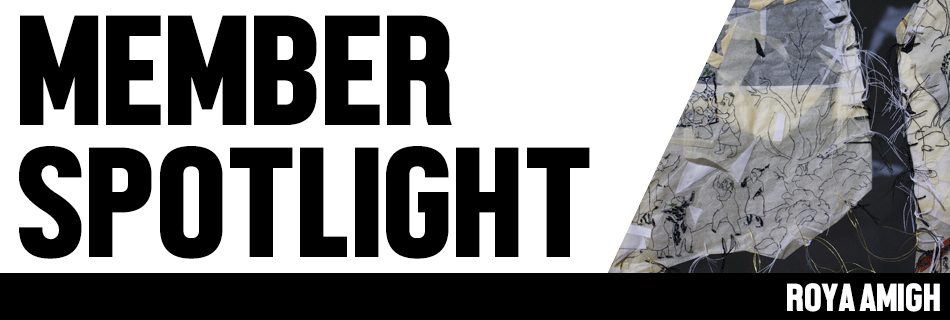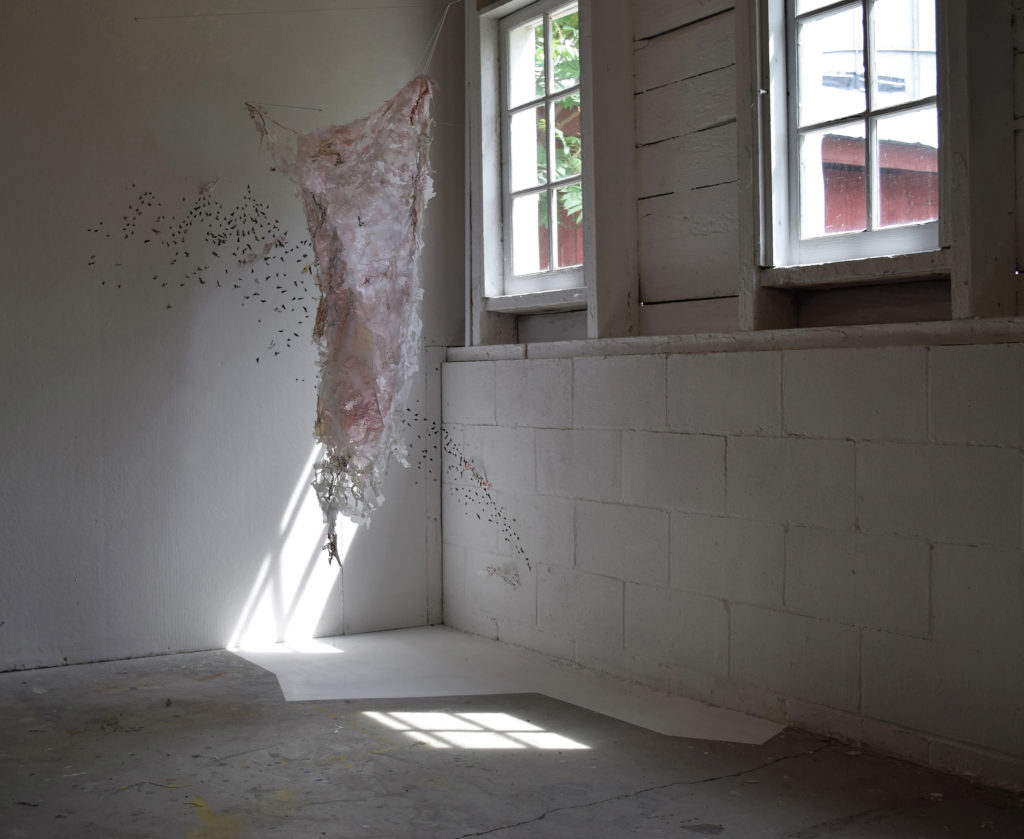
Roya Amigh
Roya Amigh earned an MFA in Painting from Boston University in 2012. Her solo exhibitions include those at Greenfield Community College, MA, 2019; Babson College, MA, 2018; FiveMyles gallery, Brooklyn, NY, and Iron Tail Gallery, Lincoln, NE, 2017. Group shows include Cambridge Art Association, 2021; Shiva Gallery at John Jay College, CUNY, NYC 2018; Yangpyeong Art Museum, Gyeonggi-do, Korea, 2018; the Museum of Contemporary Art of Crete, Rethymno, Greece, 2018; Brown University, Providence, RI, 2017; The Art Complex Museum, Duxbury, MA, 2017; Edward Hopper House Museum, Nyack, NY, 2016; Katonah Museum of Art, NY, 2015; and Macy Gallery, Columbia University, NYC, 2014. She was an artist-in-residence at Assets for Artists | MASS MoCA, North Adams, MA; Art Omi, Ghent, NY; The Millay Colony for the Arts, among others. Roya has been selected to receive the Massachusetts Cultural Council Fellowship in Drawing and Printmaking, 2020 and first prize in 2021 National Prize Show at Cambridge Art Association . She lives and works in Cambridge, MA.
Q&A
Content warning: The artist discusses rape as the subject matter of one of her work’s later in this interview.
What are your earliest memories of being artistic? As a kid, about four or five years old, drawing was the best way to express my feelings, especially when I was upset.
When did art become a pursuit? I was 13 when I was sure I want to become a visual artist.
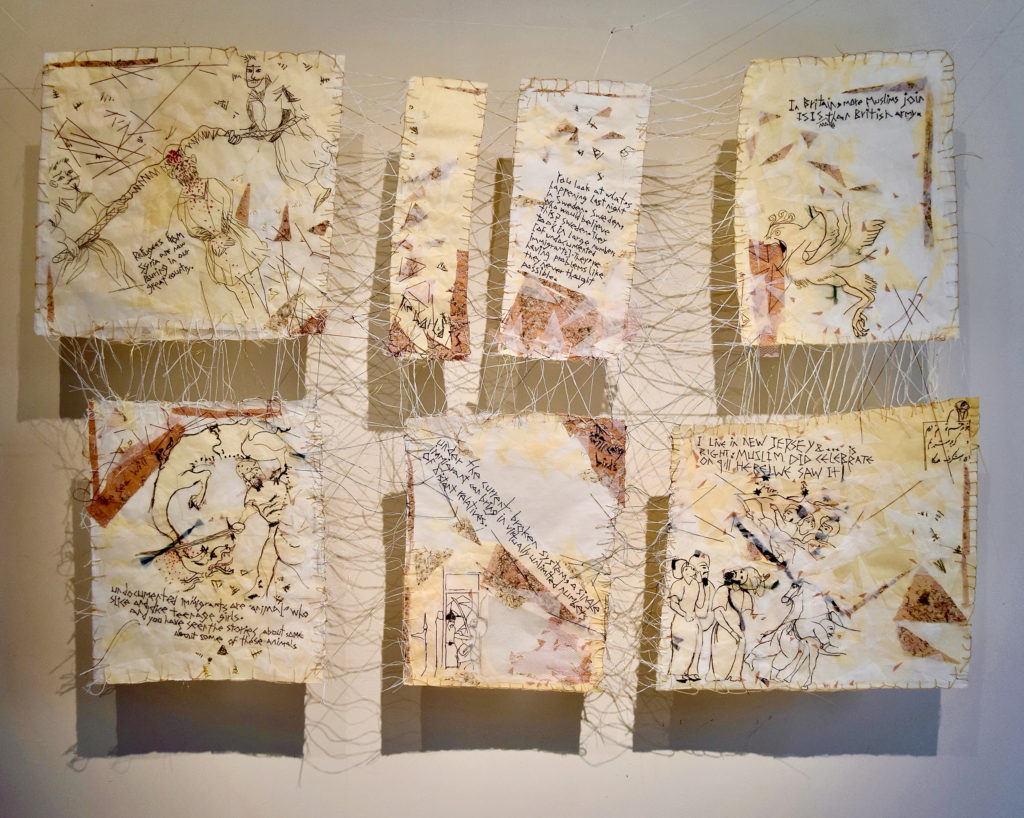
Are you self-taught or formally educated in visual art? I am formally educated in visual art. I went to Boston University to get my MFA in Painting from 2010 to 2012.
How did you first become involved with CAA? Since February 23, 2020, I became an Associate Artist Member.
What medium do you currently work in and how did you choose this medium? How do you choose your subject matter? Is there a reoccurring theme that carries throughout your work? In my current project “Absolutism and sexuality”, I focus on Iranian women’s social history and identity at the intersection of the categories “gender” and “sexuality”. I do this in drawing where I combine thread and paper and my own version of a contemporary Persian miniature.
The imagery of my work comes from a Persian miniature. A Persian miniature is an illustration of texts, mostly classical Iranian literature, and it is made of vivid gouache paint on paper. I am modifying the genre of Persian miniatures by eliminating most of the colors, reforming the figures and sometimes their genders, and giving them a strong quality of line and textile. I recreate many Persian miniatures by gluing thread on paper – first I apply the glue with a pin on paper, drawing the reformed imagery with glue, then I adhere the thread over the glue trails. I make many of these tiny drawings, then assemble them in fragmented pieces, which all are stitched to each other by a thread to build up the work. Persian miniatures have tremendous characters, symbols, and mythical beings, which I am furnishing with my own feminist interpretations and interweaving them with the new narration of the real events that I know first-hand.
I am narrating the real events that happen to the women I know, by remembering them and rethinking their experiences and effects of living within them in everyday life as a third-person point of view within my work. I integrate these collective memories with folktales and classic Iranian literature, which has gender differentiation. Most of the classical literature written by men includes a subjugation of sexuality, but the folktales, which are mostly narrated by women, feature the liberation of sexuality. I am also utilizing this gender differentiation, which is interlocking with the erotic desires and frustrations in response to the social and cultural values, in the narration of my work.

In your opinion, what’s your best/favorite piece you’ve made? The coerced contact is the most important piece that I ever made, and I wish I didn’t have to make it. Since 2016, I have started making works about rape because of what happened to one of the people I love. When she shared her story with me, it was tough for me to even think about it and process it. The first step was how I wanted to visualize it, how I wanted to represent it. In work The coerced contact, I tried to balance off her pain with her strength and beauty. So I used Homa — the mythical bird from Persian mythology — to show her strength, and I quoted Rumi’s poetry so that the work would also be healing. But visually, it was like shredded cloth. You realize that something has happened to her. Around the piece, I then scattered these triangle forms/shapes around the piece because it is the strongest shape for me. You cannot break it down; it is aggressive. These little black triangles can be seen as flies. When people see the work from a close distance, it is beautiful, but from far away, they feel disturbing when the triangles come into view.
What is one of your artistic goals? Having a sustainable studio practice.
What is your favorite place to see art? I don’t have one favorite place to see art; I like the diversity of the places with different atmospheres.
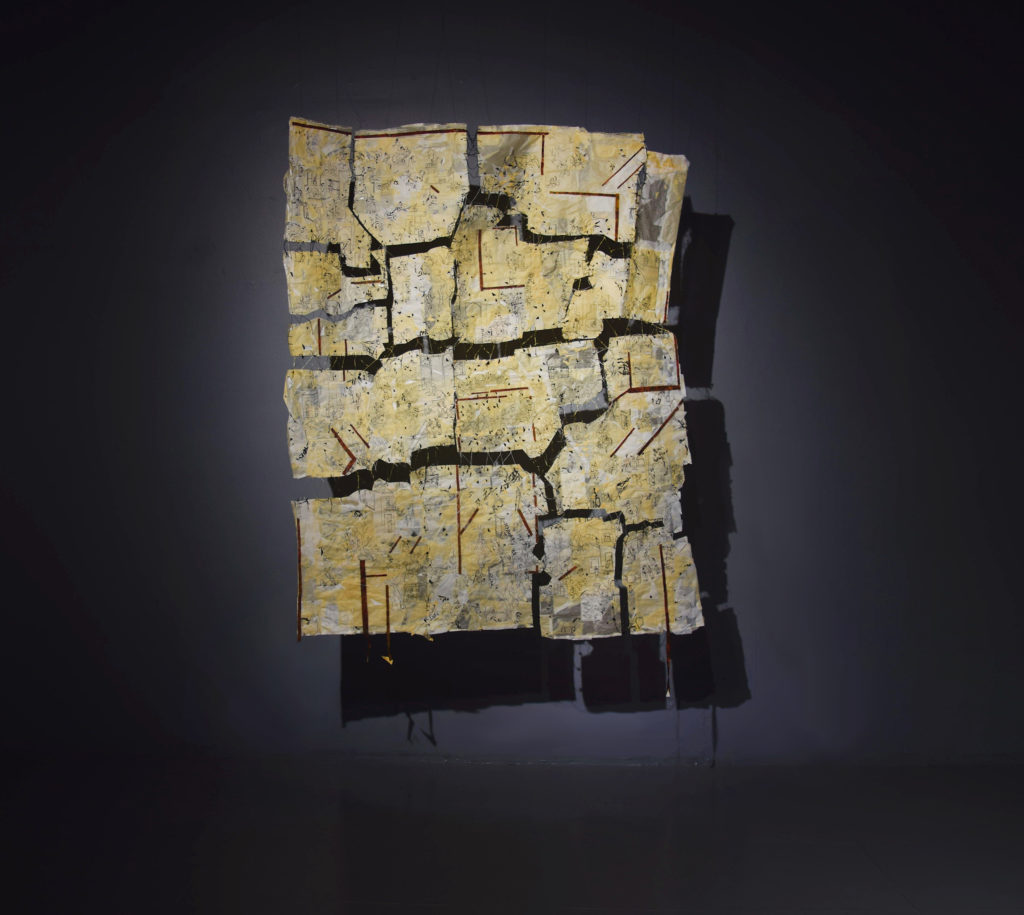
What living artists are you inspired by? Many living artists are inspiring to me, including Doris Salcedo, El Anatsui, Sonya Kelliher-Combs, Alina Szapocznikow, Jenny Holzer, and Senga Nengudi.
Do you own any art by other artists? Is so, what artists? Yes, I have artworks by Kyle Hackett and Alla Lazebnik.
Do you have any shows coming up? Yes, I have an exhibition at Boston Sculptors Gallery titled Absolutism and Sexuality. It runs from July 14 – August 15, 2021 with the Artists’ Reception on Saturday, July 17, 2 – 5 pm. I am giving an artist talk related to the show on Thursday, July 29 at 6 pm.
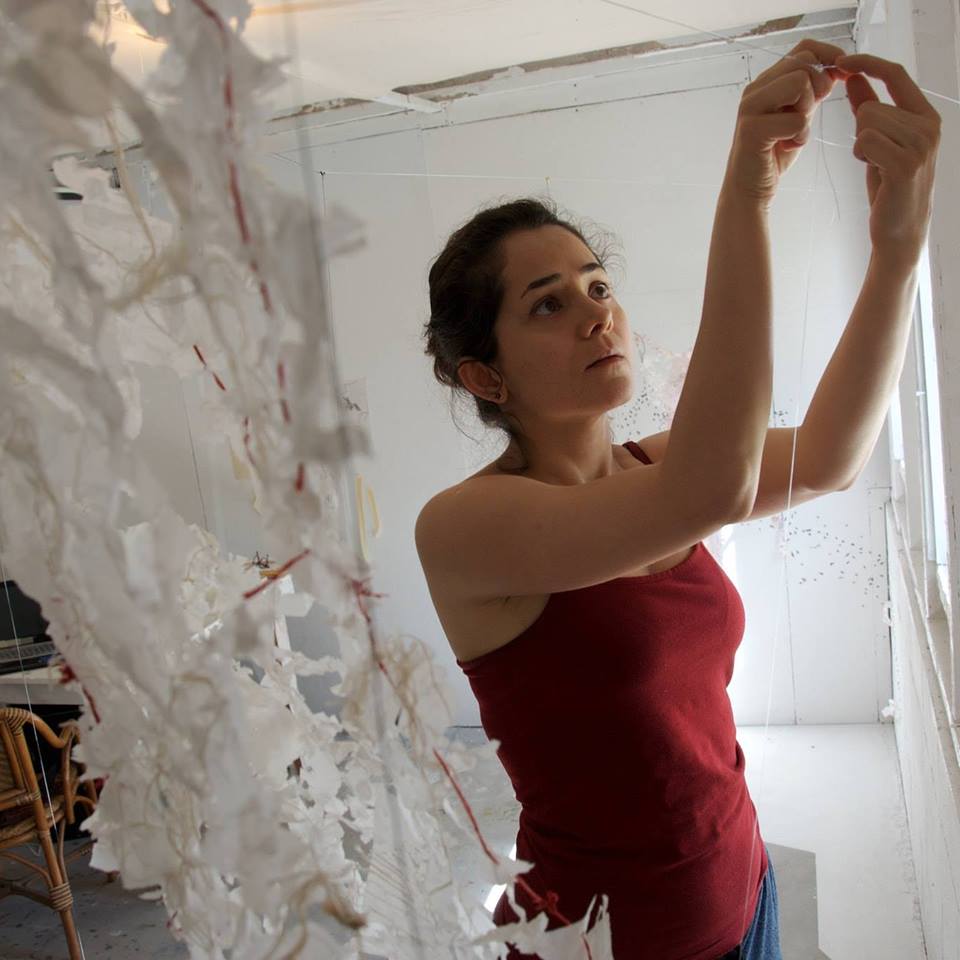
See more from Roya
Website: royaamigh.com
Instagram: @royaamigh
